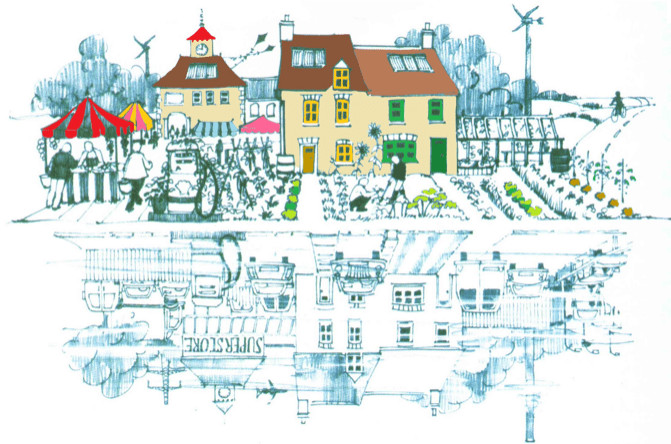Community can shape its land with the CLTs

The concept of community land Trust (CLT) is not a mere one. Letchworth and Welwyn Garden Cities, both in Hertfordshire date back to the beginning of the 21st century. In the past few years there has been a revival of this concept. More and more communities are taking the future of their village into their own hands. Various self organised groups are at different stages of development. There are, in fact, more than 200 CLTs in the UK. But it also a very popular movement in Europe and the US.
This article sets out the experience of early Community Land Trust (CLTs) that can successful help to develop affordable housing but can also provide a wide range of other buildings, including work units, community halls, facilities for elderly and young people.
CLTs are community-driven local organisations and they are emerging with vibrant force in recent years. They have been receiving increasing political and financial support and they currently have a presence within the National Housing Federation, which now hosts the National CLT Network.
Access to the land for a housing development scheme might be easier following the path of CLT, as some landowners would rather entrust their land to a local CLT rather than to an external developer or association.
Access to funding is another good reason to join a CLT: the Homes and Community Agency (HCA) is reserving some funds for scheme involving CLTs. They can also access other streams of funding, including community shares.
CLTs can successfully share interests and visions with other established and traditional organizations, such as local or national housing associations. They both work in the property world on a non-profit basis and have similar funding, leasing and town planning models. Most importantly they both aim to improve people’s quality of life.
There is no one-size-fits-all model: several case studies can provide a snapshot overview of the wide range of partnership activity around the country:
- stand alone CLT with services from housing association
(CLT develops the site and owns homes)
Example: East London CLT working with Poplar HARCA , which results into approximately 275 homes with 35% affordable housing requirement
- CLT/housing association partnership with services from housing association
(CLT buys land and housing association delivers under long term lease)
Ex: Symene CLT and Hastoe in Dorset, providing 10 homes, 6 for rent and 2 for shared ownership
- CLT/housing association partnership resale covenant
(Housing association acquires the site and develops, CLT holds pre-emption right and resale covenant)
Ex: St Minver CLT and Cornwall Rural Housing Association, with the interesting result of 8 self-build bungalows – freehold with a resale covenant – and 4 social rented homes.
Our office is working closely with two CLT groups and, as architects, we can provide technical expertise on the planning as well as technological construction. It is important to set a realistic budget/ time frame to work to. Either self built or with the support of a housing association/ private developers. The cost of the land, the infrastructure and the individual houses needs to be established at the outset. It is also necessary for the group to agree on the design principles (ie. eco building/ transport issues/ access facilities) as well as the governing body for the implementation of the project, so that the social and technical aspects are developed in parallel. This is the only path to a successful CLT project.
Being aware and forefront of this new way to work with the communities and the neighbourhood planning can enrich the housing sector from the democratic nature of Community Land Trust.
